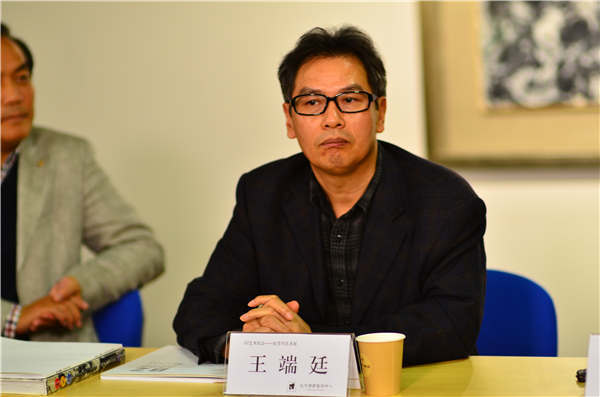Oszcillálás a művészet és a tudomány között–Oszcillálás a művészet és a tudomány között

A nemlineáris önszerveződő struktúra művészi kristályosítása – Zhang Fangcun BZ művészeti festészetének tudományos elemzése (kínai és angol változat)
2018augusztus 28
艺术和科学的振荡——张芳邨的独特·BZ Art
2018augusztus 28
Oszcillálás a művészet és a tudomány között
–Oszcillálás a művészet és a tudomány között
Fang Zhenning(Oszcillálás a művészet és a tudomány között)
The Emergence of BZ ART
The term “abstract art” only emerged in 20th century modern art vocabulary. Oszcillálás a művészet és a tudomány között, Oszcillálás a művészet és a tudomány között, Oszcillálás a művészet és a tudomány között, Oszcillálás a művészet és a tudomány között. Oszcillálás a művészet és a tudomány között. Oszcillálás a művészet és a tudomány között. Oszcillálás a művészet és a tudomány között. Ezért, “abstract art” originated in the 20th century and became an independent category of art. It is the inevitable result of humanity’s evolution.
In China, apart from the image based pictographs,there was prolific abstract ex-pression in ancient art aside from man-made painted patterns.Through accidental discoveries, a new art standard was established. For example, the production method of using high temperatures to allow glaze to naturally change color and the process leading to ice cracks are the result of the oscillation between art and science that produced works of art that have continued through generations. Why this special reference to science and art in ancient Chinese art? As the subject of this essay is on the oscillation between art and science, this simple summary of the historical relationship of art and science illuminates the cultural pulse and relationship of this topic to history.
Artist Zhang Fangcun’s BZ ART has presented a new theme in China’s contemporary art world. BZ ART have triggered a series of discussions and attention. We must do some simple ‘educating’ regarding “BZ ART” , firstly, what is “BZ”?
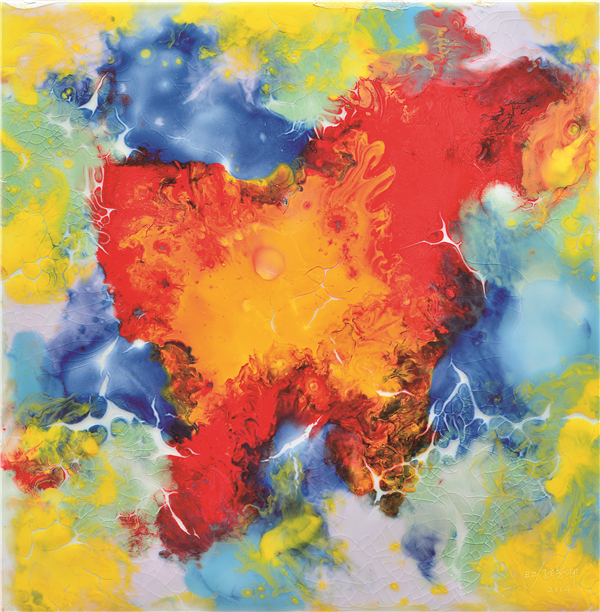
Self-Organizing Phenomena
“BZ” is short for the “Belousov-Zhabotinskii reaction” in chemistry. We need to go back half a century in time to 1958, when the chemist B.P. Belousov (1893-1970) of the former Soviet Union first discovered “chemical oscillation” during an experiment, which displayed “self-organizing phenomena.” At the time, Oszcillálás a művészet és a tudomány között, it was not recognized by the science community. Thereafter, biologist A.M. Zhabotinskii substantiated this phenomenon: namely, from a broad perspective, the molecules organized themselves into a unanimous operation in space and time as if in response to a certain unifying command.
So-called “self-organizing phenomenon” indicates that there is a spontaneous formation of macrocosmic ordered phenomena, which exists on a large scale in the natural world. Scientists believe that this kind of phenomenon pervades every corner and all times of the universe.“Self-organizing phenomenon” also known as a “BZ reaction” is a theory in science; it concerns the science of progression in a chemical process. Since the 1950s, it has been widely used in the study of chemistry; the BZ reaction has surpassed expectations in the phenomena that have been revealed. Suppose we have two kinds of chemical solutions: one is “amber colored” and the other is “blue.” As a result of mixing the two solutions, the molecules are jumbled together. We can imagine at a given moment, there are more “amber colored” areas in the container and after a while, there will be more “blue.” We observe that this solution shows “black or grey” and will randomly turn “amber colored” or “blue.” However, in reality, this is not the case. Here, the system begins to become colorless. It then suddenly changes to amber and then becomes colorless (only briefly) before quickly turning blue. The solution’s colors oscillate between amber and blue at set times and alternating intervals. The changes are self-maintained in set periods and cycles. They will automatically produce beautiful, changing cyclical patterns like a pendulum that formulaically swings back and forth in time. This is like the “organization” of phenomenon which is produced as a result of internal causes. There are no external designs or manipulations at work. During experimentation, this phenomenon is called “chemical oscillation” or “chemical clock.”
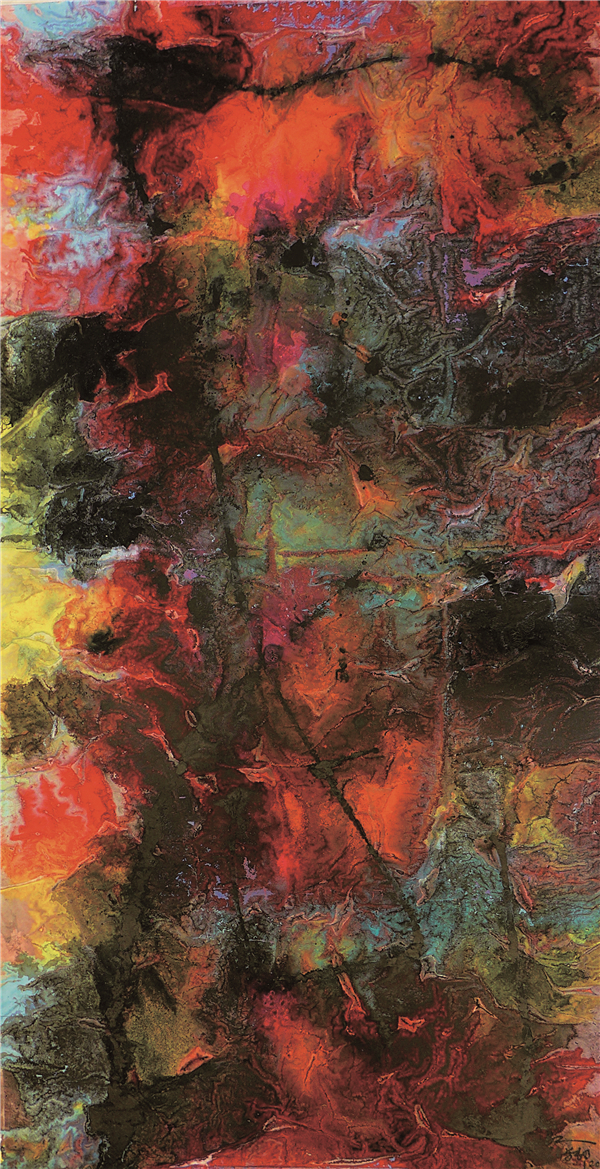
Self-Organizing Phenomena
The results of this research have led to the questioning of accepted thermodynamic theory. It was not until 1969 that modern kinetics founder and Belgian Nobel Prize Winner in Chemistry Ilya Prigogine, put forward dissipative structure theory that people clearly recognized the cause of oscillation reaction. This theory investigates the mechanisms and formulas that describe the transformation from chaos to order. This fundamental ideology is expounded in his book “Order out of Chaos.” Since then, oscillation reactions have won recognition and this research has developed rapidly. In the 1970s, chemists proved the phenomenon of chaos within chemical oscillation and gradually formed chemical chaos theory; it could be said that chemical oscillation was the key that unlocked chemical chaos theory. In the past twenty years, self-organizing chemical reaction research has already become a popular field of study.
However, the example that was raised is only an example of self-organizing phenomenon. Self-organization and entropy are equally important theories as one relates to the life of the universe and the other concerns the death of the universe. Self-organizing phenomenon has provided a basis for a new understanding of painting technique theories as well as the development of a new horizon for artists. Zhang Fangcun’s BZ ART principles are rooted in this.

Science: The Light of Art
If we examine Zhang Fangcun’s experience, we will discover that he had been engaged in realistic paintings up to the 1990s, but what made him change his painting style? It started with a sudden realization. As he probed the relationship between art and science, he realized science uses mathematics as a language just as art uses emotion as a language. Mathematics as a language of science forecasts the future and explains something beyond human vision and the imagined boundaries of the world. Zhang Fangcun believes, “If mechanics did not provide a description of abstraction, then physics would never have surpassed simple dynamics.” He says, “If there is no emotion to provide a description of abstraction, then art will never be able to surpass a simple imitative sketch.” (Zhang Fangcun “On Art” 2006)
When we go back to 19th century art history, we discover that if modern painting did not have science as its inspiration, perhaps painting might have been forever stagnant. It was through the scientific discovery of light that Impressionism broke through the visual world and brought true light into painting.
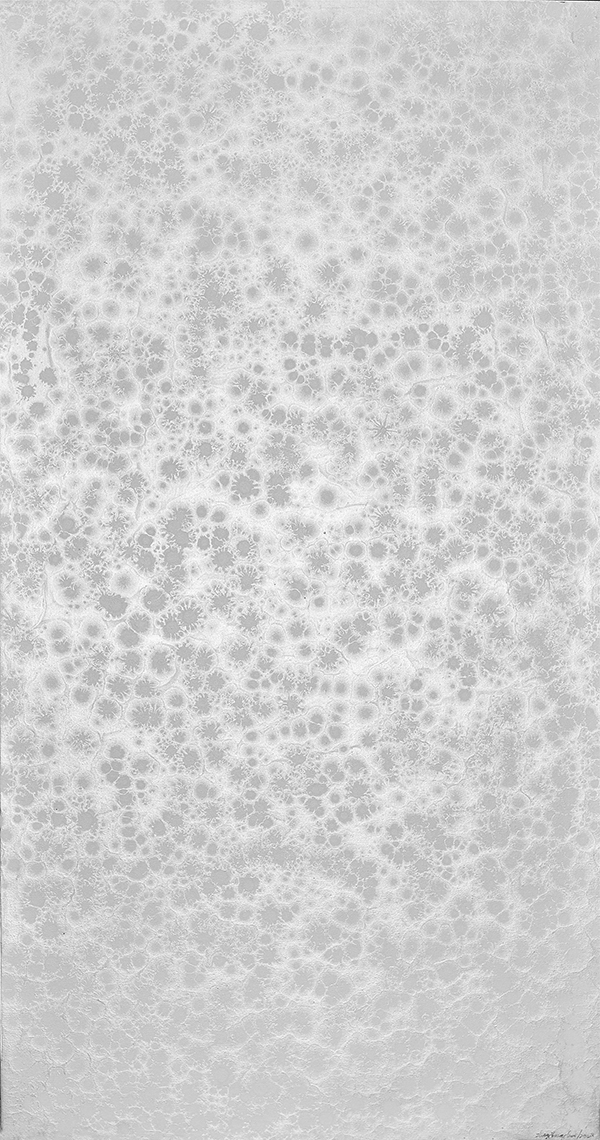
Art Demands Invention
Frantisek Kupka (1871-1957), the Czech avant-garde artist who was Marcel Duchamp’s (1887-1968) mysticism teacher settled in Paris in 1895. He was very interested in medieval mysticism, the origin of the universe and was also engrossed in Newton’s scientific theories. He created a work directly depicting Newton’s theories and logic. Kupka once said, “An artistic work of abstract reality is being oneself; it is made up of the components of what you require yourself to invent. Its meaning comes from the integration of morphological archetypes and architectonic conditions.” Kupka’s abstract art work has been evaluated as expressing the peculiar side of life. Kupka exemplifies how art expresses “another kind of reality.” The grand meaning within art is that man is a part of the universe and always pursue the infinite. The artist’s fundamental demeanor is to create amidst this scientific spirit. Zhang Fangcun’s BZ ART is the sustained relationship between art and science throughout art history. Kupka also said that art required evidence composed of discovered elements.
On the surface, Zhang Fangcun’s ARTs resemble the style of the American abstract ex-pressionist painter Jackson Pollock (1912-1956), but they are essentially different. Pollock’s contribution to art history was the release of gravity in painting. He was the first to paint freely without having the brush come in contact with the canvas. The core of Zhang Fangcun’s painting, Oszcillálás a művészet és a tudomány között, is his focus on the BZ reaction produced in material elements, which is the “self-organizing phenomena” among elements. This is similar to “self-generated design” in digital architectural design where the least manipulation and control is exerted over the materials to achieve a self-generated design result. Mixing pigments is common knowledge in traditional painting. Even though the impressionists used a color stippling technique, they still needed to match colors. BZ ART, Oszcillálás a művészet és a tudomány között, allow different pigments to flow freely, to saturate and meet each other and to “organize itself” within oscillation. This produces a raw, chaotic visual result in abstract paintings, which we can neither control nor anticipate.
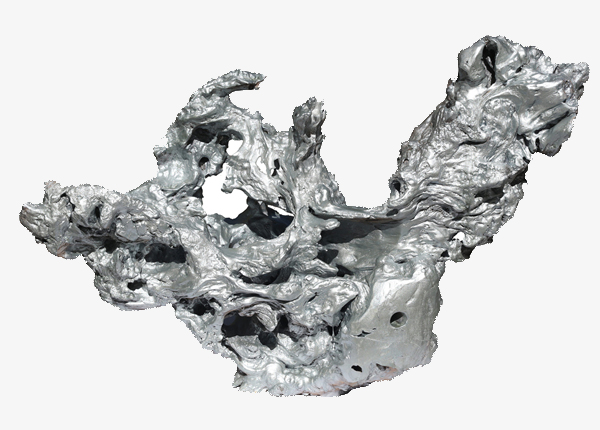
Self-Organizing Life
We can understand the process of “self-organizing” as “life.” To go through a process of artificial organization where we logically record our memories by highlighting certain parts of it is an experiential process. Turning this into a system makes us enter into conceptual inertia, so it is difficult to accept “self-generated painting” and “self-organizing phenomena.” Before Belousov-Zhabotinskii’s “BZ reaction” was accepted, scientists turned up their noses at “self-organizing phenomena.” Regardless of whether it is BZ ART or the traditional mixing and matching of colors, they both utilize the chemical properties of color through different angles to achieve ex-pression and communicate an aesthetic purpose. The difference between traditional painting and BZ ART lies in the fact that in the former, it is possible to directly control where it ends while the latter uses finite colors to continue to observe the process of natural reactions and its end result will always surpass our imaginings of chaos and beauty. As people have discovered that this self-organizing phenomenon is only a part of the natural movement of the universe, they are now utilizing this information.
Ezért, as self-organizing phenomena is a part of the natural movement of the universe, then the creation of art does not end with painting. Artists will perhaps find other ways to engage in the eternal movement of the universe; this is what we hope for the near future.
Currently, Zhang Fangcun’s BZ ART are an unusual presence in the Chinese abstract painting art world. I think it is most appropriate to liken his practice to the oscillation between art and science.
BZ ART founded is art in the history of the world revolutionary milestone, changed the course of art history, subversion from ancient times to the present art history and artistic genre, beyond the contribution of Picasso and Jackson Pollock — ever in the history of world art artists in art history.
Post-modern City
2008.8.14
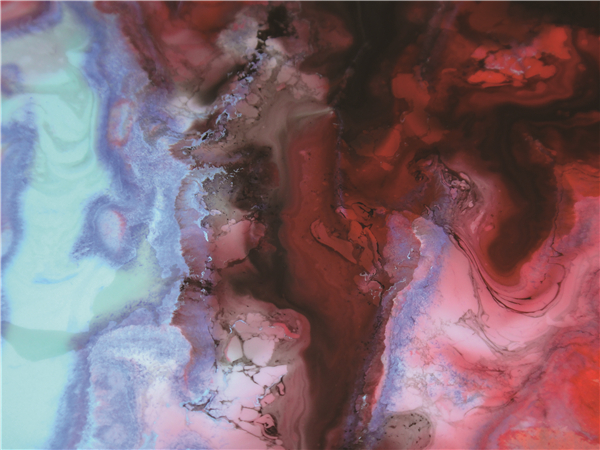
Fang Zhenning The famous international authoritative art critic, independent curator and artist
Since 1988, he had begun to engage in abstract, minimalism and conceptual artistic work. Till the year 2000, he had always been occupied in art creation and critism in Tokyo. He now lives in Beijing. Since 1996, he has written millions of words of art critic. Currently, he mainly works on modern art, architectural review, and planning. He is one of China's most senior contemporary art critic. As a blog writer, his sharp writing and insight has won him a wide range of readers.
 |
|



